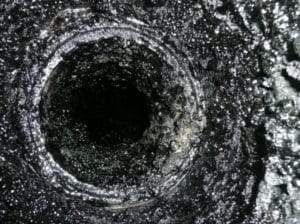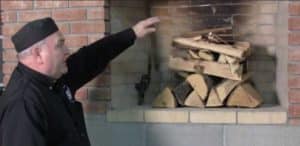DIFFERENT TYPES OF FIREWOOD: Does it Really Matter?
Yes, it really does. Choosing the right type of wood for your fireplace or wood-burning stove involves many factors. When the firewood was cut, for instance, can play a role in whether or not it is the right wood for you. The more recently the wood has been cut, the more water it contains. Well-seasoned wood is dryer and is therefore easier to get started, and produces a hotter, cleaner burn. Firewood should always be stored outdoors, off the ground, and with some type of overhead covering to prevent direct contact with rain or snow. This area should be well-ventilated to allow the air to circulate and dry the wood out. Firewood that has been stored properly and cut at least six months before burning will produce a much better burn.
Many think the most important factor to consider when selecting firewood is what species the wood is, when in reality, the greater concern should be the moisture content of your logs. Too much moisture content can be bad for your chimney! Water should not be present in the wood you are burning. The United States Environmental Protection Agency (EPA) recommends testing wood with a moisture meter for safe wood-burning practices.
So what happens when you use firewood with high moisture content? Well, the moisture inside of the firewood has to go somewhere. Can you guess where that moisture will go? YUP… right through your chimney! This produces more smoke and less heat, and the moisture that gets transferred to your chimney can lead to a number of problems, including creosote buildup.

Creosote is a combustible deposit which adheres to the inner walls of your chimney, hardening over time. It can become very difficult to remove, especially if you wait too long in between professional chimney sweeps. This residue can restrict airflow, and is a hazard to your home and to your health. Creosote exposure puts you at risk of a number of side-effects, including skin and eye irritation as well as respiratory issues. While that in itself is problematic enough, the more pressing issue is that CREOSOTE IS ONE OF THE WORLD’S LEADING CAUSES OF CHIMNEY FIRES!
Another important thing to remember is to avoid using any chemically-treated wood! It may be tempting to use any random wood you may find laying around, but please resist the urge! Burning treated wood releases toxic compounds, and is extremely hazardous to your health as well as dangerous to your home!

You should also consider how you position your firewood. The firewood or logs should be placed towards the back of your fireplace (on top of a supporting grate when possible), with the wood stacked so the largest pieces are on the bottom; smallest towards the top. Be sure to leave some room on the sides and at the top to help prevent the flames from growing too high and entering your chimney. On top of the wood should be your kindling (ex: dry branches, sticks or wood shavings), which should then be topped with a small amount of tinder (newspaper works great). You can then simply light the tinder with a match. This is what is referred to as a “Top-Down Burn,” and is the most efficient way to start a fire. As always, make sure your damper is open before you light your fire!
So where should you buy your firewood? Well, you should know there are Firewood Movement Regulations in the State of Florida which may impact your decision. It may sound surprising, but you cannot bring firewood into the State of Florida without proper permitting. Because of these regulations, it is highly advisable that you only use locally-sourced (i.e. used within 50 miles of its place of origin) firewood.

We want to help keep you and your family safe. Be smart about the type of wood you choose, how you burn it, and how you maintain your system. Contact Chimney Champions® to schedule your service with a CSIA-Certified Chimney Sweep!

